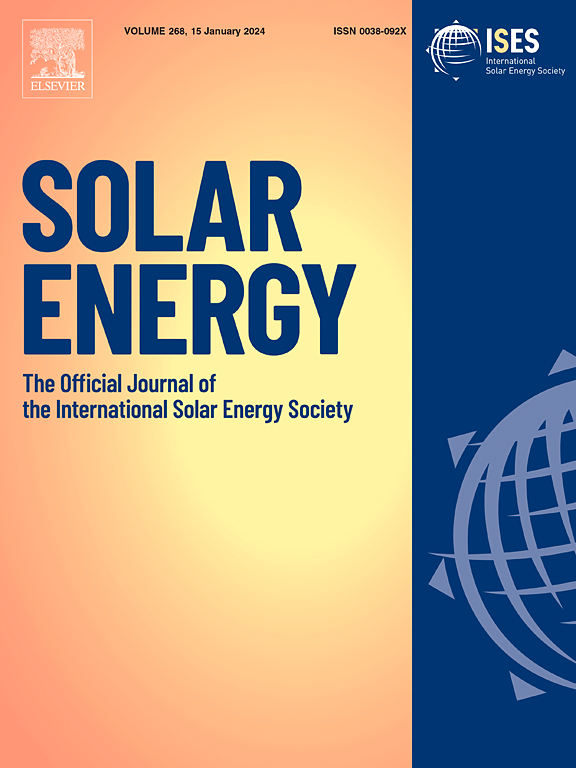Experimental and numerical comparison of glass tube collector with relative single-axis tracking and flat-plate collector without tracking during cloudy-sky days
IF 6
2区 工程技术
Q2 ENERGY & FUELS
引用次数: 0
Abstract
Single-axis trackers can improve the thermal performance of solar collectors by up to 40 % during clear-sky days. However, these advantages can be significantly reduced during the cloudy-sky days. This paper experimentally and numerically investigated and compared the thermal performances of two solar collector types (with the same inclined position and absorber material) in cases when the percentage share of diffuse solar radiation in total solar radiation was more dominant than beam solar radiation: glass tube collector with relative single-axis tracking (novel solar tracking concept) and fixed flat-plate collector (traditional solar non-tracking concept). Experimental results for one cloudy-sky day (29 July 2021) showed that compared to a fixed solar collector, the new tracking solar collector’s average daily specific useful heat was higher by about 8 % (<10 %). For the same date, the tracking solar collector regression line was slightly above and nearly parallel to the fixed solar collector regression line, which showed that the tracking mechanism has no major practical significance in such meteorological conditions. Simulations on an extended sample (15 June, 20 July, and 6 October) in EnergyPlus software agreed with experimental results, showing that the benefits of the single-axis tracking mechanism could be reduced to less than 3.5 % in some circumstances.
求助全文
约1分钟内获得全文
求助全文
来源期刊

Solar Energy
工程技术-能源与燃料
CiteScore
13.90
自引率
9.00%
发文量
0
审稿时长
47 days
期刊介绍:
Solar Energy welcomes manuscripts presenting information not previously published in journals on any aspect of solar energy research, development, application, measurement or policy. The term "solar energy" in this context includes the indirect uses such as wind energy and biomass
 求助内容:
求助内容: 应助结果提醒方式:
应助结果提醒方式:


